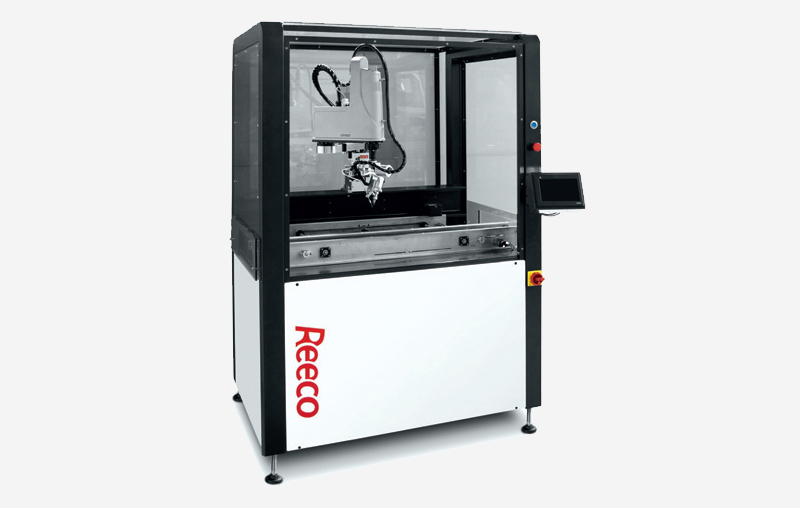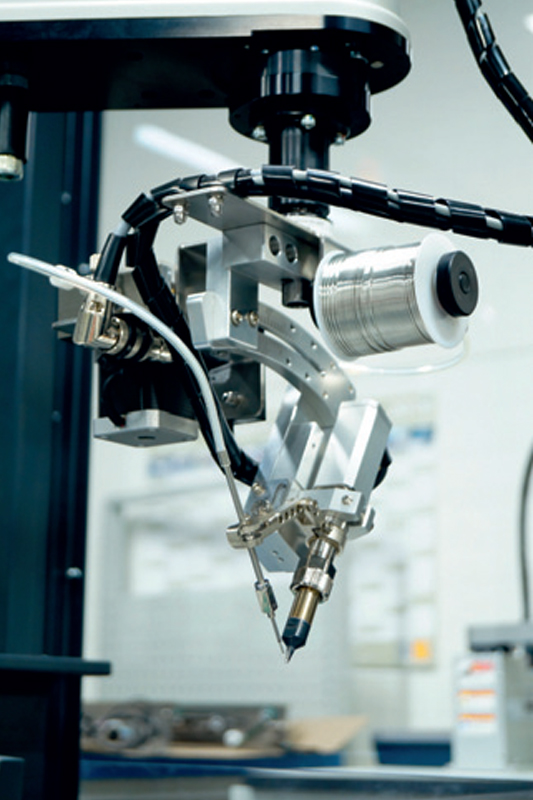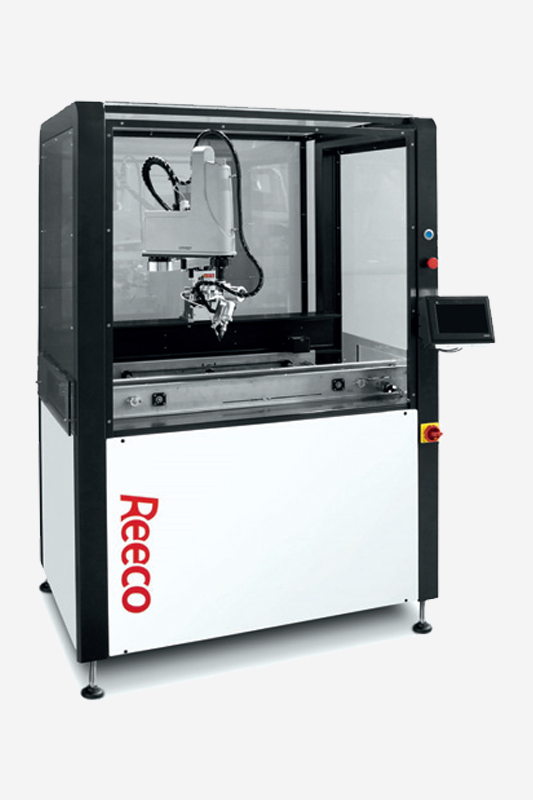Although the surface mount technology is already several decades old and is the main choice in the production of electronics, unfortunately, it is still not possible to completely eliminate the THT components from the circuit boards. Power connectors, large capacitors or power components can often not be soldered in surface technology, which makes it necessary to maintain manual assembly stations and devices to operate them.
In the standard production process, the soldering of the threaded components is done on the so-called „wave”. Due to the very high performance of these machines, it is an expensive operation: it requires complicated carriers made of expensive materials. The carriers must also be made individually for each application that will be subjected to the „wave” soldering process.
Due to increasing miniaturization, there is also a process of selective soldering, in which the leads of components assembled by means of the threaded technology are set at the outlet of a narrow nozzle with a solder, so that only places of interest are soldered. Unfortunately, this process is much slower and much more complicated than wave soldering.
THE ANSWER IS SOLDERING ROBOTS
Recently, it can be observed that the share of robots in electronics production is increasing rapidly. This is probably because they are no longer specialised custom-made machines used in the production of semiconductors or displays, but serial SCARA-type robots or 6-axis units, adapted to tasks previously performed manually during the production of electronics.
In order to meet customers’ expectations of continuously reducing production costs and increasing quality and productivity, Renex decided to build a machine for selective soldering of THT components using an Omron SCARA robot.
The basic assumption of the project was not to use expensive components required for the construction of PCB carriers used in the soldering process, simplification of the soldering process in relation to selective soldering and in-lines capabilities, very popular to SMT production.
Thanks to Renex’s experience and cooperation with Omron – one of the best suppliers of SCARA robots on the Polish market – such a task has been achieved.
In the second quarter of 2016, Renex will include a robotised station for soldering threaded parts. It is based on Omron’s R6YXGL series of R6YXGL robots and a structural frame. The machine is designed for in line operation, soldering head, automatic soldering wire feeder, tip cleaning station and induction generator for the soldering handle.
The designers decided to use 150 W induction heating technology and the head has a large heat capacity, which allows to solder even very large heat sinks, which would be a problem when using classic heater solders. The automatic feeder is able to work with soldering wires with a diameter from 0.5 to 1.5 mm, both with and without a flux core. The feeder itself perforates the entire length of the wire during binder feeding, which significantly reduces the phenomenon of flux and solder splashes when it comes into contact with the heated tip.
The device is equipped with edge transport and a SMEMA interface, according to IPC guidelines (IPC SMEMA- 9851). Therefore, several devices can be combined if the application requires more than one blade or use loader and unloader stations to automate the feeding of parts into the machine.
The whole process is taken care of by a PLC that controls all auxiliary equipment such as transport, soldering generator, wire feeder, tip cleaning station, and shows the current status of the machine both on Omron’s 7-inch NB-series operator panel and via the Patlite LME signals.
A programmable relay, compliant with the Machinery Directive, is responsible for operating safety, performing independently all safety functions used in the machine.
For quick programming, you can use Gerber files containing the design of the board from which solder points are indicated, or you can use the method of pointing out points on the first board and programming their position in the robot. A PC with a dedicated application for the machine, connected to the device via Ethernet, is used for programming. The robot itself does not require a PC to work and after programming it carries out the process itself.
PRODUCT DEVELOPMENT AND TESTING FACILITIES
The robots will be further developed according to suggestions from customers and integrators working in the electronics industry. The partnership established with Omron, and the support of the application engineers, enabled the project to be implemented quickly. The success of the machine and the good reception of the first customers who took part in the testing of the machine will surely lead to a deeper cooperation with Omron on subsequent projects. The above description and characteristics of the robots only briefly describes the capabilities of these production equipment.
Analyzing the capabilities of the machines in a Demoroom production environment provides the basis for making informed decisions. The possibility to carry out tests on applications provided by the customer will certainly provide a lot of information. We also invite you to contact Renex for cooperation on machine development and implementation projects.
DOWNLOAD PDF (IN POLISH)


